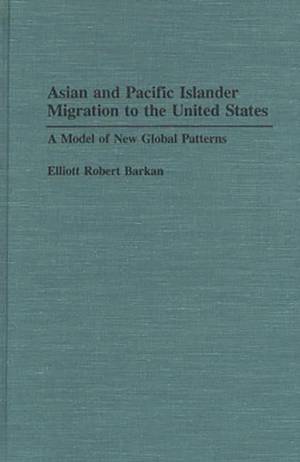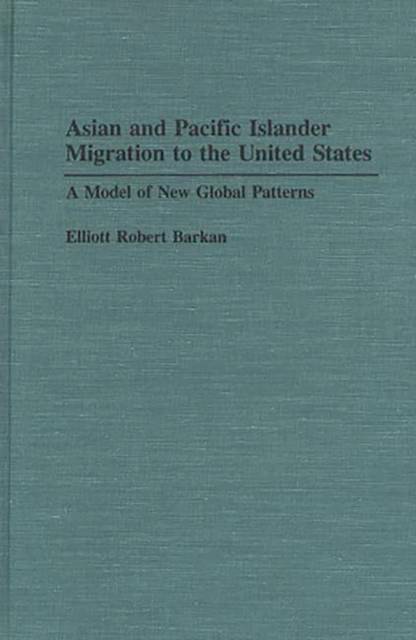
- Afhalen na 1 uur in een winkel met voorraad
- Gratis thuislevering in België vanaf € 30
- Ruim aanbod met 7 miljoen producten
- Afhalen na 1 uur in een winkel met voorraad
- Gratis thuislevering in België vanaf € 30
- Ruim aanbod met 7 miljoen producten
Zoeken
Asian and Pacific Islander Migration to the United States
A Model of New Global Patterns
Elliott Robert Barkan
€ 161,45
+ 322 punten
Omschrijving
This novel analysis of contemporary Asian and Pacific Islander immigration to the United States offers the most up-to-date synthesis of findings on global migration today. It presents a series of principles regarding new double-step patterns in population movements at the end of the twentieth century. This discussion of new paths and modes of world migration in a rimless world is intended for a broad, inter-disciplinary audience of students, teachers, and professionals in ethnic studies, U.S. history, Asian and Asian-American studies, studies relating to the Pacific Rim, sociology, demographics, and international relations.
This study of multi-level and multi-directional global migration opens with an analysis of world migration theory, macro and micro factors in international migration, and a review of research about recent migration patterns. Next, this study offers twenty-seven propositions about factors that have affected decisions of peoples to move elsewhere, their adjustment to new countries, their return migrations, and the impact of international migration. Asian and Pacific Islander immigration to the United States is examined along with extensive data based on U.S. immigration records. This fourth wave of immigration to the United States is then analyzed in detail. Accompanying this data and analysis is a model of double stepwise international migration--extremely useful for those studying the intricacies of global patterns of migration. Barkan concludes with other data on mobility variables, an appendix, and an index.Specificaties
Betrokkenen
- Auteur(s):
- Uitgeverij:
Inhoud
- Aantal bladzijden:
- 280
- Taal:
- Engels
- Reeks:
- Reeksnummer:
- nr. 30
Eigenschappen
- Productcode (EAN):
- 9780313275388
- Verschijningsdatum:
- 10/12/1992
- Uitvoering:
- Hardcover
- Formaat:
- Genaaid
- Afmetingen:
- 162 mm x 243 mm
- Gewicht:
- 625 g

Alleen bij Standaard Boekhandel
+ 322 punten op je klantenkaart van Standaard Boekhandel
Beoordelingen
We publiceren alleen reviews die voldoen aan de voorwaarden voor reviews. Bekijk onze voorwaarden voor reviews.











